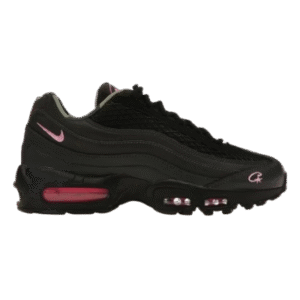In the world of global trade and manufacturing, MOQ—short for Minimum Order Quantity—is one of the most crucial terms that importers need to understand. Especially when Sourcing From China, MOQ plays a significant role in determining pricing, production feasibility, and supplier relationships.
Whether you are a startup launching a new product or an established business scaling up, understanding how MOQ works can significantly impact your costs and decision-making process. This article breaks down everything you need to know about MOQ when working with Chinese suppliers, and how you can negotiate it effectively.
What is MOQ?
MOQ stands for Minimum Order Quantity, which refers to the smallest number of units a supplier is willing to produce or sell in one order. Suppliers set MOQs to ensure their production processes are economically viable. Producing too few units often doesn’t justify the operational costs, especially in large-scale manufacturing environments like those in China.
MOQs are usually quoted in terms of:
- Units per order (e.g., 500 units minimum)
- Monetary value (e.g., minimum $1,000 per order)
- Per product variant (e.g., 300 red shirts and 300 blue shirts)
Why Do Chinese Suppliers Have MOQs?
Chinese manufacturers operate in a highly competitive, cost-sensitive environment. They manage slim profit margins and rely on large volumes to stay afloat. Here’s why they set MOQs:
1. Production Costs
Setting up machinery, sourcing raw materials, and hiring labor comes at a cost. Small orders often don’t cover these fixed expenses.
2. Economies of Scale
Larger production runs reduce the cost per unit. This is especially important for manufacturers dealing with low-margin goods.
3. Supplier Risk Management
Small orders may not be worth the financial risk, especially for first-time buyers who may not place repeat orders.
4. Material Sourcing
Raw material suppliers also have their own MOQs. If the factory has to purchase more materials than needed, the excess becomes a loss unless another client uses the same material.
Common Types of MOQs
Understanding the different types of MOQs can help you better negotiate and plan your purchases. Here are the most common:
Product-Level MOQ
The total minimum units for a particular product, regardless of variations such as color or size.
Variation-Based MOQ
A specific MOQ applied to each variant. For example, a supplier may require 200 units per color for a t-shirt.
Order Value MOQ
Some suppliers prefer to set the MOQ based on the total value of the order, rather than units.
How MOQ Affects Your Business
MOQ can have a significant impact on several areas of your business, especially when sourcing from China.
1. Inventory Management
High MOQs mean larger inventories, which can strain your storage space and cash flow.
2. Product Testing
If you’re launching a new product, a high MOQ may be risky. It increases your financial exposure if the product doesn’t sell.
3. Cash Flow
Ordering large quantities upfront ties up capital that could be used elsewhere in your business.
4. Product Variety
You may be forced to limit your product options because of high MOQs for each variant.
MOQ in Different Industries
MOQ levels vary depending on the type of product and manufacturing process involved. Here’s a quick overview:
| Industry | Typical MOQ |
| Apparel | 300–1000 pieces per style |
| Electronics | 500–1000 units |
| Packaging | 5000–10000 units |
| Plastics & Molding | 1000+ units |
| Jewelry | 100–300 pieces |
| Furniture | 10–100 units |
Understanding these industry norms will help you avoid unreasonable expectations and choose the right suppliers.
How to Negotiate MOQ With Chinese Suppliers
MOQ is not always fixed. In many cases, suppliers are open to negotiation—especially if they see long-term potential in your business. Here’s how to go about it:
1. Build Trust
Suppliers are more willing to lower MOQs for buyers they trust. Be transparent about your business, share your growth plans, and maintain open communication.
2. Ask Politely
Don’t make aggressive demands. Frame your request as a mutual benefit: “We’d like to test 200 units before placing a larger order.”
3. Offer to Pay a Premium
Suppliers may agree to a lower MOQ if you accept a higher unit cost to offset their production setup costs.
4. Use Standard Materials
Custom products often require higher MOQs due to unique molds and materials. Choosing standard components and designs can help reduce MOQ.
5. Bundle Orders
If you’re sourcing multiple products from the same supplier, ask if you can meet MOQ across the total order rather than per item.
6. Work with a china sourcing agent
A professional sourcing agent can leverage relationships and negotiate better MOQs on your behalf. They also understand cultural nuances and can navigate discussions more effectively than many overseas buyers.
Red Flags When Negotiating MOQ
While negotiating, be cautious of these red flags:
- Too Low MOQ Offered: If a supplier offers an extremely low MOQ, it might indicate poor product quality or that they are middlemen rather than actual manufacturers.
- Changing Terms Later: Some suppliers agree to lower MOQs initially but change the terms later. Always get agreements in writing.
- No Sample Orders: A supplier refusing to provide samples before a full order might not be trustworthy.
Alternatives When MOQ is Too High
If a supplier’s MOQ is beyond your budget or storage capacity, consider the following options:
1. Look for Trading Companies
Trading companies usually offer lower MOQs as they aggregate products from different factories. However, this can come at a higher price per unit.
2. Buy Stock Products
Choose from existing product lines instead of requesting custom designs. Factories often keep stock items with lower MOQ requirements.
3. Group Buying
Join buying groups or communities of importers who purchase in bulk and split orders.
4. Use Online B2B Platforms
Platforms like Alibaba or 1688 offer a wide range of suppliers with varying MOQs. Be sure to verify supplier credentials thoroughly.
5. Plan a Long-Term Strategy
If your budget allows, plan for future demand and negotiate MOQ based on multiple shipments or a year-long order.
The MOQ and Pricing Relationship
It’s important to understand that MOQ and unit pricing go hand in hand. The more you buy, the lower your unit cost tends to be. Here’s a simplified example:
| Quantity Ordered | Unit Price |
| 100 units | $10.00 |
| 500 units | $7.00 |
| 1000 units | $5.00 |
Negotiating a lower MOQ often leads to a higher unit cost. Balancing MOQ with your pricing strategy is crucial for profitability.
Final Thoughts
MOQ is not just a number—it’s a reflection of a supplier’s business model, production process, and risk tolerance. When sourcing from China, it’s vital to approach MOQ discussions strategically, with a mix of professionalism and cultural sensitivity.
Lowering MOQ is possible, but it comes with trade-offs. It may affect your per-unit pricing, customization options, or supplier interest. However, with the right planning and perhaps the help of a trusted china sourcing agent, you can find a workable balance that suits both your budget and your business goals.
Understanding MOQ empowers you to make smarter, more cost-effective decisions when importing products. Don’t treat it as a barrier; treat it as a negotiation point that, when handled well, opens the door to long-term supplier relationships and business growth.






